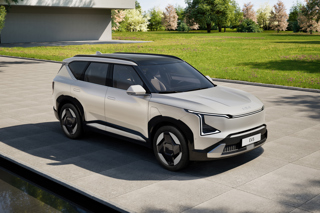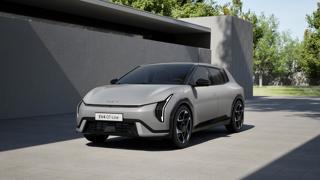Established in 1997, Euro NCAP has become a catalyst for encouraging safety improvements to new car designs.
There are eight testing laboratories situated around Europe, with 30-40 models crash-tested and rated every year.
The cars are usually seen early in the launch process, but manufacturers do not have to send their cars through to EuroNCAP or any other crash test company by law.
Many choose to because of the growing emphasis on car safety and how safety is increasingly influencing buying behaviours.
Simon Edmonds, technical manager at EuroNCAP, has been at the company since 2001 and admits that there is always a risk for manufacturers to put their vehicles through the crash tests despite the advancements in car safety.
“Nowadays, the cars we test will usually get four or five stars. If a particular car falls below that it can have a detrimental effect on sales and that is a big risk for manufacturers,” said Edmonds.
The testing process
Analysing crash data is a long process which involves piecing together video, data and physical evidence to reach an overall safety rating.
Three cars of each model are crash-tested for side, pole and frontal impacts, other tests include pedestrian safety, whiplash and ESC.
Edmonds will first analyse the crash data, videos and pictures before examining the physical evidence. It is the level of damage that is important.
Almost all of the components in the cars are dismantled and examined, with points deducted based on the damage the collision has caused.
Edmonds needs to analyse all scenarios and scales of damage. For example, if a passenger’s leg was six inches to the left, would it have been broken in the collision?
The pole test is carried out at 19mph, the frontal at 40mph and the side collision at 50km/h.
Edmonds says these speeds are more than adequate to assess damage despite some people’s scepticism.
“On paper, the speeds look low, but in reality they are very high. There is, in most cases, an event which triggers the crash which will usually cause the car to slow before its final impact.
"If there was to be a full impact at 70mph, the result would be disastrous and there are few cars that would cope with that kind of impact,” said Edmonds.
For the pedestrian checks, adult and child head and leg forms are shot using a special gun towards the vehicle at various speeds and different areas of the car. Edmonds will then inspect the damage, with particular focus around the dummies’ heads.
The inspectors take three days to go through all of the evidence, with the frontal collision examination usually taking the most time – up to a day and a half.
Once finished the inspectors produce a report with feedback for the manufacturer and award the official star rating.
Having an overall rating compels manufacturers to concentrate on all areas of the car, especially pedestrian protection, which used to be less of a priority.
The overall rating is made up of the following: adult passenger score – 50%, child passenger score – 20%, pedestrian – 20%, safety assist 10%.
Sometimes the crash tests highlight system failures or equipment breakages which can, in some cases, trigger a recall if existing models have the same components or parts.
It is important that the cars EuroNCAP test are straight off the production line and what customers would buy.
“We have to make sure the cars we get are standard cars that are off the production line,” said Edmonds.
New safety technology
Car safety is continually improving. For EuroNCAP, it’s a big growth area.
Developing tests to analyse new technology is a complicated process and Edmonds tries to keep his finger on the pulse with all the new technology by going to events and launches.
“We are looking at new technology and constantly looking at how we can test and compare new technology and there is new technology coming out all the time,” said Edmonds.
Edmonds believes a key area for growth in the industry will be AEB (autonomous emergency braking) that will bring reductions in casualties and insurance premiums.
“We think road casualties will drop in the UK and insurers have said they will reduce premiums by 15% if AEB is in a car – it is a phenomenal piece of technology as long as it works,” said Edmonds.



















Login to comment
Comments
No comments have been made yet.